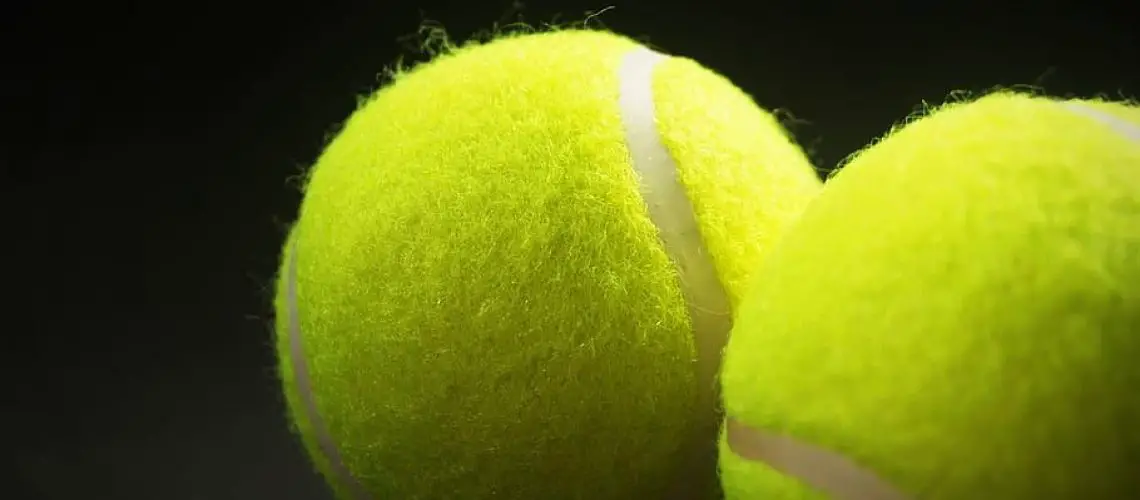We may earn money or products from the companies mentioned in this post.
Introduction

When it comes to playing tennis, the performance of your racquet can greatly impact your game One often overlooked aspect of racquet maintenance is string tension Over time, the strings on a tennis racquet can lose their elasticity and become worn out, leading to decreased performance and potential injury That’s why restringing your tennis racquet regularly is crucial for maintaining optimal performance and preventing injuries
Maintain Optimal Performance
Strings play a vital role in how a tennis racquet performs on the court As you hit the ball, the strings absorb the impact and transfer energy back into the shot Over time, these strings can lose tension and become less responsive This loss of tension results in reduced control, power, and spin on your shots
By restringing your tennis racquet regularly, you ensure that the strings are at their optimal tension level This allows for maximum power transfer from your swing to the ball, giving you more control over your shots Whether you’re hitting powerful serves or executing delicate drop shots, having properly tensioned strings will enhance every aspect of your game
Prevent Injury
Another important reason to restring your tennis racquet is injury prevention When strings lose tension, they become looser and less forgiving upon impact with the ball This means that they are less effective at absorbing shock and vibrations during play
If you continue playing with worn-out strings, there’s a higher risk of developing repetitive strain injuries such as tennis elbow or wrist pain By restringing your racquet regularly, you maintain consistent string tension which helps reduce stress on your arm joints and muscles
Factors Influencing String Tension

Playing Style
Your playing style is a key factor in determining the ideal string tension for your racquet If you’re an aggressive player who generates a lot of power and spin, higher string tension may be preferable This will provide better control over your shots and minimize the trampoline effect that can occur with looser strings
On the other hand, if you prefer a more finesse-oriented game or have a slower swing speed, lower string tension might suit you better This allows for more power and depth on your shots without sacrificing control
Racquet Type
The type of racquet you use also influences the optimal string tension Different racquets have varying characteristics such as head size, weight distribution, and stiffness These factors can affect how the racquet interacts with the ball and how much it deforms upon impact
A smaller head size typically requires higher string tension to generate sufficient power and control Conversely, larger head sizes offer more forgiveness on off-center hits and may benefit from slightly lower string tensions
Additionally, stiffer racquets tend to perform better with lower string tensions as they already provide enough power on their own Softer or more flexible frames may benefit from higher tensions to maximize control
In conclusion,
How to Determine When It’s Time to Restring Your Tennis Racquet

As a tennis player, you rely on your racquet to perform at its best Over time, the strings on your racquet can wear out and lose their effectiveness But how do you know when it’s time to restring? Here are some signs to look out for:
Signs of Worn Strings
-
Fraying or Broken Strands:
Take a close look at your strings If you notice any fraying or broken strands, it’s a clear indication that they are worn out and need replacing -
Loss of Tension and Power:
Pay attention to how your shots feel If you find that your shots have lost their power and control, it could be due to the loss of tension in your strings
Assessing Your Play Frequency and Level
The frequency and level at which you play tennis also impact when you should consider restringing your racquet Here are a couple of factors to consider:
-
Hours Played per Week:
Think about how often you play tennis in a week Casual players who hit the court occasionally may not need to restring as frequently as competitive players who spend several hours playing intense matches -
Casual Players vs Competitive Players:
Casual players who play recreationally might be able to go longer between restrings compared to competitive players who put more stress on their racquets with frequent high-intensity play -
Singles vs Doubles Players:
The type of tennis you play can also affect string longevity Singles players tend to hit the ball harder and put more strain on their strings compared to doubles players -
Personal Preferences in String Tension and Feel:
Everyone has their own preferences when it comes to string tension and feel Some players prefer a tighter string bed for more control, while others like a looser tension for added power If your racquet no longer feels comfortable or performs according to your desired play style, it might be time to restring
By paying attention to these signs and considering your play frequency and personal preferences, you can determine when it’s time to restring your tennis racquet Regular maintenance ensures that you can continue playing at your best and get the most out of your equipment
Different types of strings and their impact on restringing frequency

When it comes to tennis strings, there are several different types to choose from, each with its own characteristics and impact on restringing frequency Let’s explore the various options available:
Types of tennis strings
-
Natural gut:
Considered the holy grail of tennis strings, natural gut offers exceptional playability and comfort Made from cow intestines, this string provides a unique feel and touch on the ball However, due to its natural composition, it tends to lose tension more quickly than other types -
Synthetic gut:
This is a popular choice for recreational players as it offers a good balance between playability and durability Synthetic gut strings are made from nylon or polyester filaments wrapped around a central core They provide decent power and control without breaking the bank -
Multifilament:
Multifilament strings are composed of hundreds of individual fibers woven together They mimic the feel of natural gut but offer better durability These strings excel in providing comfort and shock absorption, making them an excellent choice for players seeking arm-friendly options -
Polyester/monofilament:
Polyester or monofilament strings are known for their durability and ability to generate spin These stiff strings offer great control but can be harsh on the arm if not properly managed Due to their low elasticity, they tend to maintain tension well over time
String characteristics and durability
The characteristics of tennis strings greatly influence how long they will last before needing replacement:
-
Playability:
Some players prioritize the feel and responsiveness of their strings Natural gut and multifilament strings typically offer superior playability but may require more frequent restringing -
Power:
Players looking for added power in their shots might opt for stiffer strings such as polyester or monofilament options These strings tend to hold tension better, resulting in longer-lasting performance -
Comfort:
If arm comfort is a concern, multifilament or natural gut strings are excellent choices Their softer composition helps dampen vibrations, reducing the risk of arm injuries -
Spin potential:
Polyester or monofilament strings have a rougher surface, allowing players to generate more spin on the ball However, this increased friction can lead to faster string wear and decreased durability
Choosing the right string for your game
Selecting the right tennis string involves considering various factors, including your playing style and any specific needs you may have:
-
Evaluate playing style:
- a) Baseline player: If you prefer staying at the baseline and hitting powerful groundstrokes, a durable string like polyester may suit your game
- b) Serve-and-volley player: For those who frequently charge the net and rely on volleys and serves, a softer string like natural gut or multifilament can enhance touch and feel
- c) All-court player: If you have an all-court style that combines baseline play with net approaches, consider finding a balance between durability and playability with synthetic gut or multifilament options
-
Consideration for arm comfort or injury prevention:
For players with arm issues or seeking to prevent injuries, it is crucial to prioritize comfort and shock absorption Multifilament or natural gut strings are often recommended in these cases
By understanding the different types of tennis strings and their impact on restringing frequency, you can make an informed decision that aligns with your playing style, preferences, and desired level of durability Remember, regular string maintenance is essential for optimal performance on the court!
Recommended Restringing Schedules Based on Various Factors

When it comes to keeping your tennis racquet in top shape, restringing is an essential part of the maintenance routine But how often should you restring? The answer depends on various factors that can affect the longevity and performance of your strings Let’s take a closer look at some recommended restringing schedules
General rule of thumb: “Restring as many times per year as you play per week”
A simple yet effective guideline to follow is to restring your racquet as many times per year as you play per week This means if you play three times a week, aim to restring your racquet three times a year By aligning your restringing schedule with your playing frequency, you ensure that your strings stay fresh and provide optimal performance
Professional recommendations
For more specific guidelines, it’s worth considering recommendations from professionals in the tennis industry The United States Tennis Association (USTA) provides valuable insights into string maintenance and suggests restringing every 40 hours of play or at least three times a year for regular players
In addition, most tennis racquet manufacturers offer their own suggestions on when to restring their specific models These recommendations are based on extensive research and testing, taking into account factors such as string durability and tension loss over time
Personalizing your restringing schedule
To further personalize your restringing schedule, consider additional factors that can influence string performance
i Consider Court Surface
- Clay courts are known for being less abrasive on strings compared to hard courts or grass courts If you primarily play on clay, you may not need to restring as frequently
- On the other hand, hard courts and grass courts can cause more wear and tear on your strings, requiring more frequent restringing
ii Adjustments for climate conditions
- Temperature fluctuations can affect the tension of your strings In hot weather, strings tend to loosen, while in cold weather, they may become tighter Consider adjusting your restringing schedule accordingly
- Humidity levels can also impact string performance High humidity can make strings feel less lively, while low humidity can lead to increased tension loss Keep an eye on the climate and adjust your restringing schedule as needed
The role of a professional stringer
Working with an experienced professional stringer is invaluable when it comes to optimizing your racquet’s performance A skilled stringer will not only handle the technical aspects of restringing but also take the time to understand your personal preferences and needs
By discussing factors such as playing style, desired feel, and budget with your stringer, they can recommend a customized restringing schedule that suits you best They may also suggest different types of strings or tensions to enhance your game even further
In conclusion, following a recommended restringing schedule based on factors like playing frequency, court surface, climate conditions, and professional recommendations ensures that you get the most out of your tennis racquet Don’t underestimate the importance of maintaining fresh strings – they play a crucial role in maximizing your performance on the court!
Useful Links

When is it time for a new tennis racquet
Why You Should Restring Your Tennis Racquet
How often do y’all restring? – Talk Tennis
How often should you restring your tennis racket?
How often should you restring your tennis racquet?
When should I get my tennis racquet restrung?
Do Tennis Strings Go Bad? Know When You Need Fresh …
Racket Tech: How to Know When to Restring – ACTIVE
When do I need to restring my tennis racket?
When to restring your racket
Mastering Tennis Racquet Stringing
Tennis Racquet Stringing + Home Pickup
How often do you string your rackets? : r/10s
How to Restring Your Own Tennis Racquet : 8 Steps
When Should You Restring Your Tennis Racket?
How to String a Tennis Racquet: 13 Steps (with Pictures)
How to String a Tennis Racket
How often do pros restring a tennis racket?
How Much Does It Cost To String A Tennis Racquet?
How To Tell If Tennis Strings Are Dead? How Long Do …






